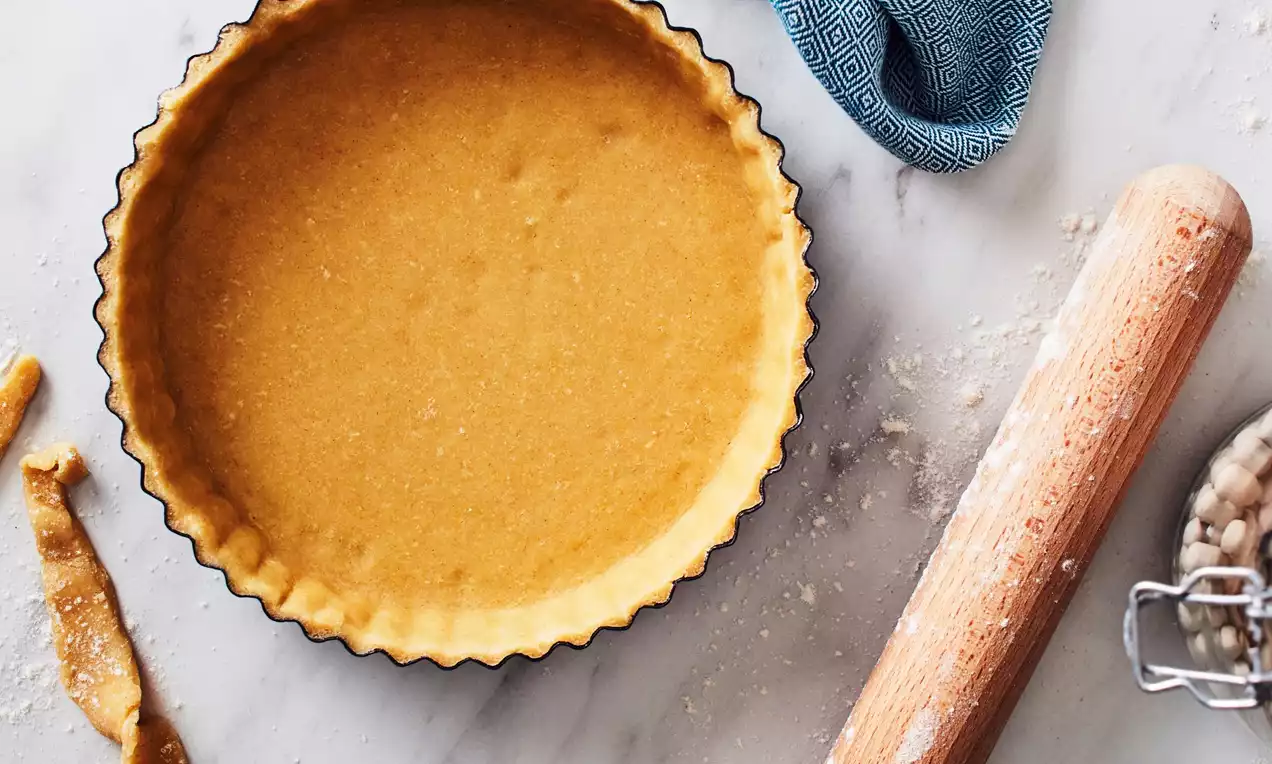
How to Blind Bake Pastry
So, you’ve been lovingly pottering away in your kitchen making the most delicious pie. But when you take it out of the oven and slice it, it has a… soggy bottom!
It’s every baker’s worst nightmare. Nevertheless, soggy pastry bottoms are – thankfully – completely avoidable with the right know-how. The answer to this common baking woe? Blind baking of course. This simple technique sees you pre-baking your pastry before you add in any raw or wet filling.
Countless recipes require blind baking, from this mouth-watering Bakewell Tart to this savoury Vegan Quiche. Never heard of blind baking before? Not to worry. We’ll take you through exactly what it involves and how you can do it yourself at home.
Blind baking sees you pre-baking your pastry before adding any fillings to it. It’s a baking technique usually used for short-crust pastry recipes (whether that’s a savoury pie, a quiche or a pudding-perfect flan) and it works wonders for preventing undercooked bases.
As well as ensuring your pastry is perfectly crisp and cooked, blind baking can also help your pie or tart filling to cook properly. That’s because blind baking removes any excess moisture from the dough which could slow down the baking process of your filling. Pretty great, right?
Ready to learn how to blind bake pastry? Here we’ll take you through shortcrust pastry blind baking – a technique you can use for dozens of different sweet and savoury recipes.
What you’ll need:
• A ball of homemade shortcrust pastry
• A rolling pin
• Greaseproof paper
• A tart/pie tin
• Baking beans*
• A fork
*Wondering what to use instead of baking beans? Dried beans or even dried pasta work just as well.
Method:
1. Pre-heat your oven to the correct temperature for your chosen recipe.
2. Roll out your pastry ball until it’s the thickness of a £1 coin. You’ll always want it to be approximately 4cm wider than the circumference of your baking tin. That’s because shortcrust pastry tends to shrink when it’s baked.
3. Carefully position your pastry over your baking tin. Gentle press it into the tin, pushing it all the way into the corners.
4. Trim off any excess pastry that’s hanging over the edges of the tin. You can use your rolling pin to help you do this – simply press it down on the edges so the excess is sliced off.
5. Poke your pastry base with a fork a few times and then cover it with a layer of greaseproof paper.
6. Pour your baking beans/dried beans/dried pasta on top. This will help weigh it down and stop the pastry from puffing up when it’s baking.
7. Blind bake your shortcrust pastry for about 15 minutes.
8. Remove it from the oven and, using the greaseproof paper to protect your fingers, take out the beans. Then bake the pastry for a further five minutes.
9. Now your pastry is ready for its filling. Making a no-bake tart that needs to set before you can devour it? Wait for your pastry to cool down completely before filling it and popping it in the fridge.
Eager to start measuring the ingredients out for your first blind baked pastry pie? Before you do, let’s take a look at a few hints and tricks that’ll guarantee your baking success.
• When rolling out your pastry, do so between two sheets of greaseproof paper. This will prevent it from sticking to your work surface, plus it’ll make moving it across to your baking tin a breeze.
• Not sure how to tell how thick your dough is? Use a dough thickness tool when you’re rolling it out.
• Always keep any scraps of pastry you have leftover as these can be used to patch up any holes when blind baking pastry. Thrown your scraps out already? Make a paste out of flour and water, and dab it into the crack or hole. Then pop the pie crust back in the oven for just a few minutes until the paste has dried. You can then fill it as planned.
• Blind baking pastry for a showstopping dessert? Create golden pastry using a basic egg or milk wash.
Now you know about the importance of blind baking pastry and how to do it, why not start whipping up a few delicious treats? This sumptuous Salted Caramel and Chocolate Tart is a chocoholic’s dream, while a batch of Gluten-Free Spinach and Ricotta Tartlets will make the ideal canapes for your next dinner party. Soggy bottoms, be gone!
Want to step even further into the wonderful world of homemade pastry? Learn how to make crispy, layered puff pastry to use in everything from tarts to sausage rolls.
Want to step even further into the wonderful world of homemade pastry? Learn how to make crispy, layered puff pastry to use in everything from tarts to sausage rolls. Also, try out our diverse selection of Dr. Oetker products, from our Madagascan Vanilla Bean Paste to Cream of Tartar or Ground Arrowroot and more.